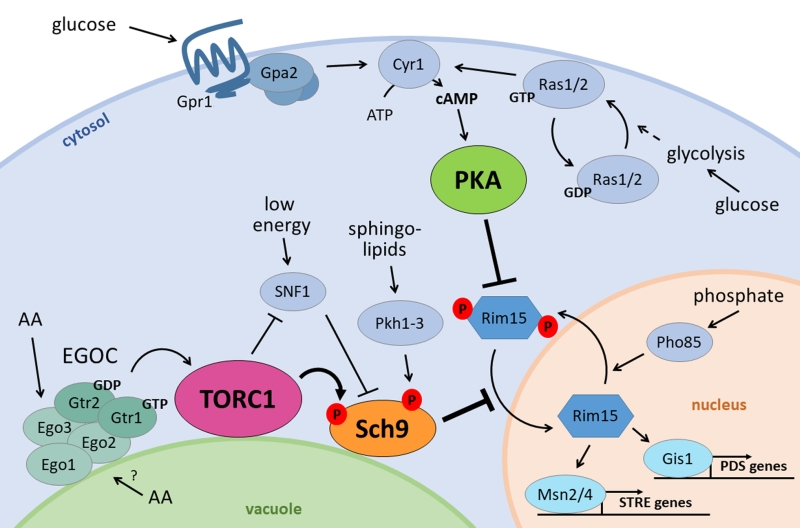Back to article: pH homeostasis links the nutrient sensing PKA/TORC1/Sch9 ménage-à-trois to stress tolerance and longevity
FIGURE 1: The nutrient signalling ménage-à-trois. Glucose stimulates PKA activity through the GPCR system of Gpr1 and Gpa2 on the one hand, and through activation of Ras1/2 on the other. Both induce cAMP production by Cyr1, activating PKA. At the vacuolar membrane, the EGOC senses amino acids from the cytosol and presumably the vacuole, and activates TORC1 in return. TORC1 negatively regulates the energy sensor SNF1 and activates Sch9 through phosphorylation. Besides TORC1, also SNF1 influences Sch9 activity as well as the sphingolipid effectors Pkh1-3. The PKA and TORC1/Sch9 branches converge on multiple players, perhaps the most prominent being Rim15, whose import into the nucleus is inhibited by both branches and is also controlled by phosphate availability through Pho85. When the ménage-à-trois is inactive, Rim15 can enter the nucleus where it induces transcription of PDS genes by Gis1 and STRE genes by the Msn2/4 transcription factors.

